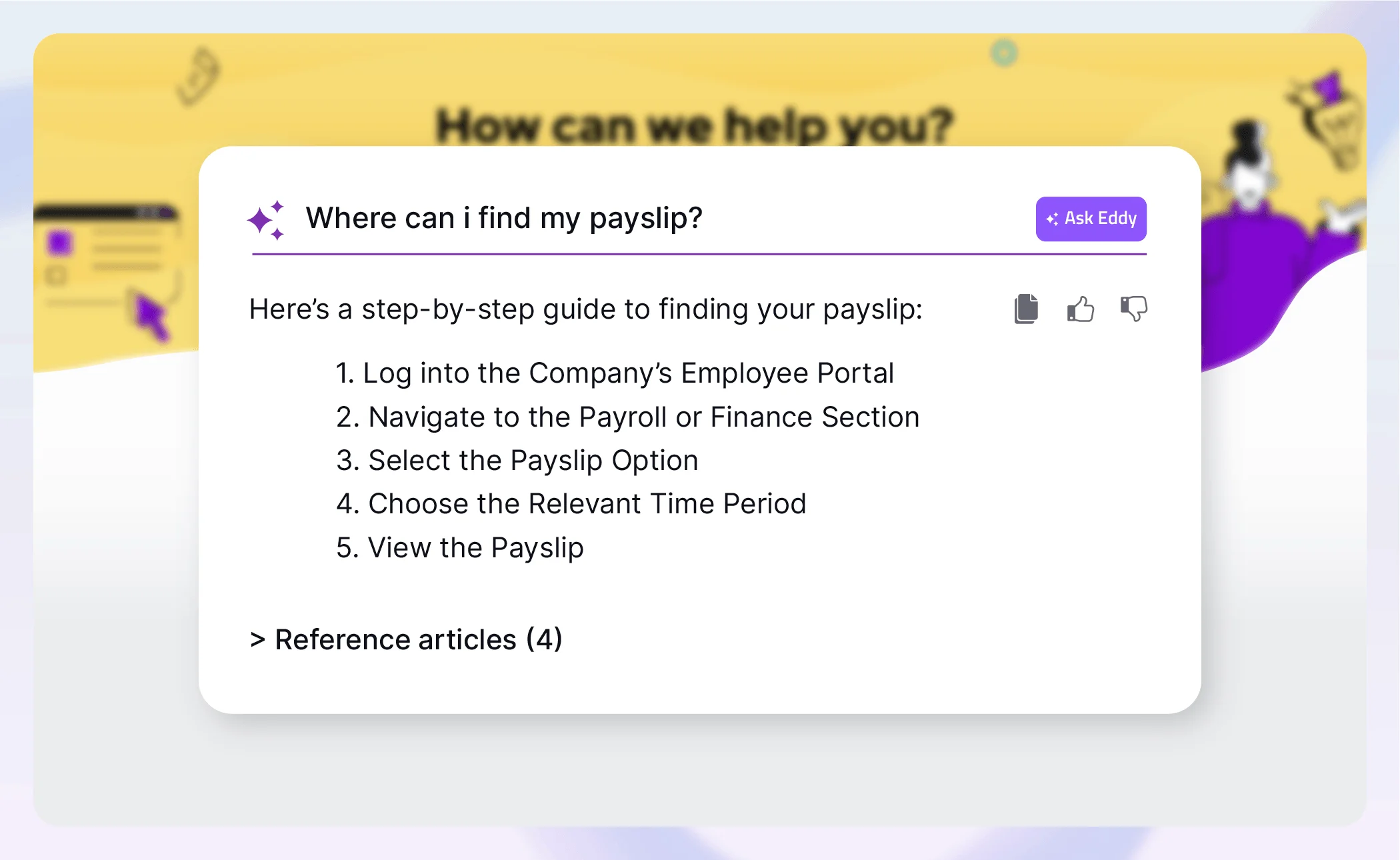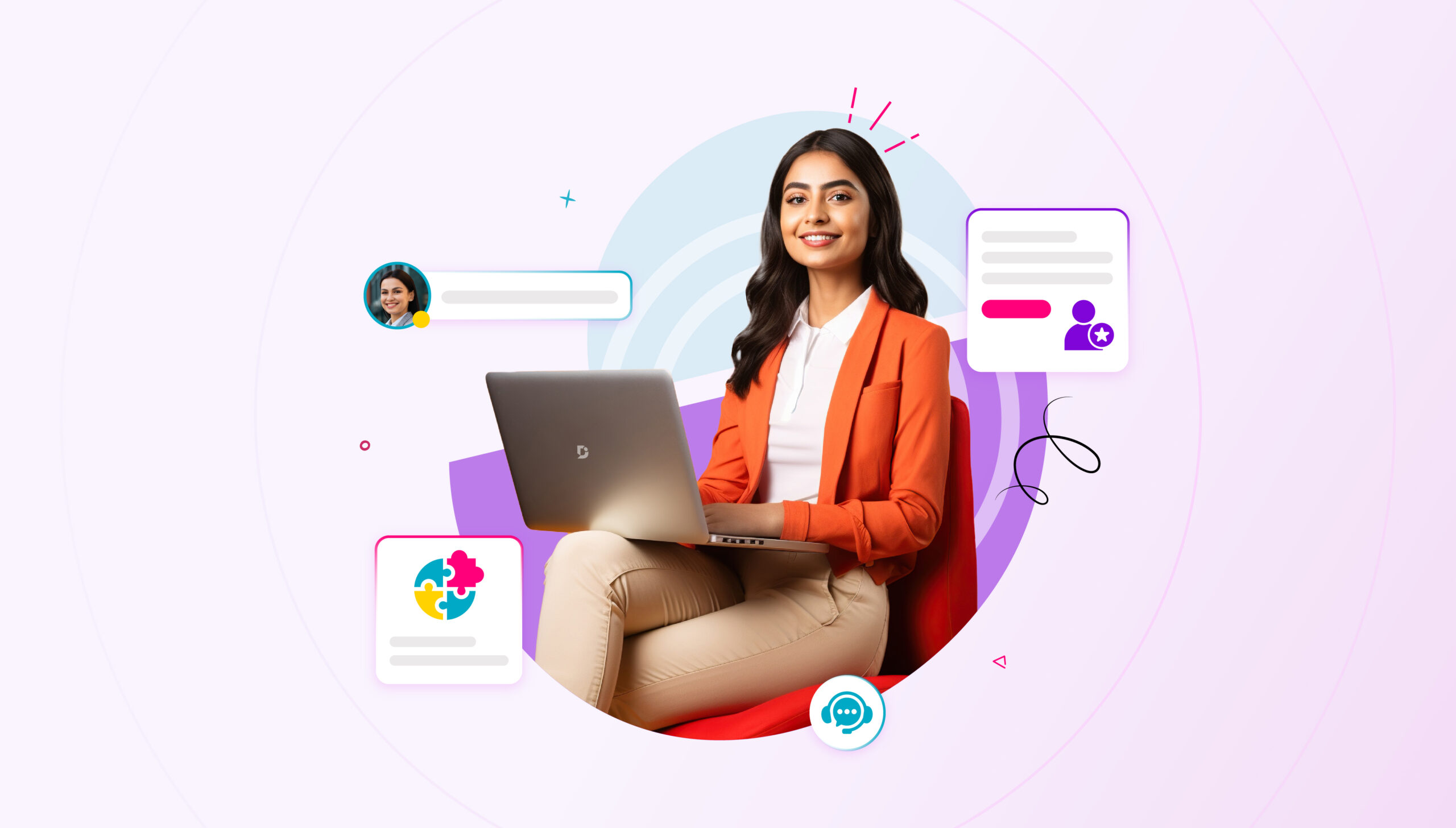The future depends on the skill. Skills like learning agility, adaptability, and resilience are what the professional world demands.
But sadly, the world isn’t there yet. A study in the UK says that 30% of employees haven’t received employee training in 5 years.
This shows that the L&D sector is still underinvested.
When there’s room for change, there’s always a challenge. Hence, a little change in mindset is required. Post-pandemic, employees were in a rage more than before. Technology has taken a shape where everything is accessible remotely. Even a job.
Employees understood the dire need to upgrade skills, and that’s where the transformation began. Employee training was the goldmine for organizations looking for high-quality talent.
Not to mention, AI and technology swept the ground and held the labor market so tight that training employees was the only way to stay in the competition.
But before we move further in the blog and identify the nuances of training and development, let’s understand the basics.
What is Employee Training & Development?
Development is the process by which someone or something grows, evolves, and advances, while training is a step done to bring about this change or progress.
Hence, employee development is how working professionals acquire and enhance their knowledge, skill sets, and mindsets to advance their careers.
With the rapid advancements in business management and operations, techniques are in abundance. One that masters all is employee training.
Why is Employee Training & Development Important?
“Give me six hours to chop down a tree, and I will spend the first four sharpening the axe.”
–Abraham Lincoln
Now apply this to the structure of your business organization: the client is your contractor, your company is the woodcutter, the trees represent the task given by the contractor, and your employees are the vital tool (the axe) you need to achieve your goal.
Successful firms place a higher priority on staff development, like a good woodcutter who sharpens his axe before taking on a tree.
Businesses enable their staff to become more productive and thereby train them to become efficient tools for accomplishing organizational objectives by investing in skills and knowledge. Ultimately, this calculated investment in human resources results in more efficient task completion and an increased ability to meet customer expectations.
Within a business, employee development and training programs are crucial as they cultivate a learning environment that fosters continuous professional growth among staff. This, in turn, leads to several key benefits –
Higher Engagement and Satisfaction
A company stands on profitable ground because of its employees; why not the other way around? If you invest in your employees and make them realize they are important, you’ll receive unparalleled dedication and drive from them in return. With a satisfied workforce, you will witness greater passion and strong work commitment from your team and simultaneously yield greater results.
Helps in spotting skill gaps
Training programs enable you to identify talent gaps within your business. It enables you to focus and spot your key deficiencies and allows you to assess your company’s limitations with greater accuracy, and develop accurate measures to counter them.
Keeps your office up-to-date
Employee development training improves your organization’s internal operations. It streamlines procedures, increases productivity, and achieves major results by providing your staff with the most current knowledge and skills.
Types of Training and Development Programs
Employee training and development programs are no longer optional; they are required. These programs provide a win-win situation for both your organization and your employees. By introducing these programs in your organization’s workflow, you benefit from higher performance outputs and strong team composition for your business, and your employees are offered a chance to go beyond their present capacities, enhance and upscale their skill sets, and shape their work personas.
However, with so many training alternatives accessible to businesses these days, it can be difficult to know where to start.
Let me enlighten you about some of the most popular and effective training and development programs there are –
New Employee Onboarding:
The first impression is the final impression, right?
When from the first day of employee onboarding, you ensure that your new teammates absorb your company’s ethos, culture, policies, and expectations to the best extent and land them on the same page as you by accurately communicating your vision to them, there is almost nothing that compares to the fresh enthusiasm, awakened passion, confidence and productive energy it induces, right from the start.
Compliance Training:
Your team of working professionals must be up to date on both their legal duties and the industry standards. By implementing compliance training modules such as diversity training, industry-specific training, etc. you can ensure that your employees understand necessary policies and procedures and follow the guidelines laid out by the institution. This, in turn, reduces risks and helps protect your firm’s hard-earned reputation.
Soft Skills Development:
A team of extremely skilled players with no teamwork can be easily beaten by a team of average players with the best teamwork. Soft skills, such as communication and problem-solving abilities, are equally important as technical abilities. It prepares your Employees to tackle challenging interpersonal situations, collaborate effectively with others, and build lasting relationships with their clients and colleagues. This leads to improved departmental communication, fosters room for collaboration, and provides for a positive work atmosphere.
Technical Training:
With the introduction of AI and ever-evolving technology, the skill sets required for various roles call for evolution too. Adapting to technological advancements, like for instance, the inclusion of an AI-powered knowledge base, must be an organization’s top goal to stay competitive in the industry and take benefit of these advancements for its growth (isn’t that the sole purpose of innovation?).
Product Knowledge Training:
Employees who work directly in customer service, sales, or product development are required to be knowledgeable about the products they work with. With this, the employees gain a comprehensive understanding of your products, making them more confident while addressing your clients and ensuring a greater conversion rate while pitching and dealing one-to-one with them.
Leadership Training:
In the longer run, the success of your company depends on the investments you make in your future leaders. Organizations should be farsighted and encourage their high-potential workers to participate in leadership development programs to gain the abilities necessary to lead and inspire teams, make wise decisions, and create a great work atmosphere, which in turn secures the organization’s future. Workshops on conflict resolution tactics, communication methods, and best practice delegation are a few examples.
Safety Training:
Prioritising Employee health and safety should be a top concern for companies. By undertaking this training, employees learned about emergency procedures, protocols, appropriate safety practices, and potential hazards related to their workspace. This can include training sessions on danger identification, fire safety, etc.
Customer Service Training:
You know a brand or a company by its product, but you remember them by the services they provide you in return. Big firms like Apple, TATA, and Microsoft are well known for their customer service and reception policies. Customer service training programs teach your team how to build client relationships, communicate information effectively, and resolve difficulties with professionalism and empathy. This results in happier, more loyal consumers who spread your word of mouth, making it more credible and persuasive.
Cross-Training Opportunities:
What’s better? Jack of all and master of none or a Master who knows nothing else? Times have changed, and multitasking and multidisciplinary skill sets are now required in their employees by organizations. Individuals who can perform tasks outside of their primary responsibilities are valuable assets. Cross-training encourages greater flexibility within your company; it also keeps you covered during staff absences or peak seasons. Cross-training opportunities can range from teaching marketing professionals basic accounting procedures to teaching salespeople how to manage customer service inquiries.
Therefore, businesses today should consider investing in employee training and development programs to improve the quality of their workforce, strengthening their institution’s fundamentals and foundation. Let’s have a look at various training and development methods at our disposal today –
Training and Development Methods
Instructor-Led Training (ILT):
Revisit your school days when the teachers used to teach us difficult topics, and we could easily register them. Even if the topics triggered our curiosities, we had the option to ask and clarify our concepts straightaway! ILT is also a method of training for employee development that involves a faculty member delivering instructions to a group of learners. The advantages of ILT include the opportunity for real-time interaction and immediate feedback. These include lectures, workshops, and demonstrations.
Self-Directed Training:
Now revisit a day just before your exam! This approach places the responsibility of learning on the individual. Employees are provided with resources such as online courses, manuals, and video tutorials, allowing them to progress at their own pace and revisit materials as needed. However, this training method calls for effective self-motivation and time management skills from the employed individuals.
Blended Learning Approaches:
Blended Learning Approaches combine instructor-led training with self-directed learning activities. They allow you to obtain the structure and guidance of ILT along with the flexibility and self-paced nature of one’s own learning. These programs often involve online modules followed by in-person workshops or discussions, catering to a diverse range of learning styles and preferences.
On-the-Job Training (OJT):
The OJT approach involves learning under the supervision of a more experienced colleague or mentor. This method is particularly effective for developing technical skills and job-specific knowledge by fostering a hands-on learning experience and allowing immediate application of newly acquired skills.
Simulations and Gamification:
Who doesn’t like to play games or be competitive? These innovative methods help create an interactive learning environment by incorporating game-like elements, which include points, leaderboards, and awards, to increase engagement and knowledge retention. When your employees compete in a healthy manner to achieve goals, this competition will not only keep them motivated but will then provide results that might exceed your expectations.
Case Studies of the usage of different methodologies of training and its Merits
Returning to our analogy of bricks and buildings, you might often need different types of bricks to constitute different types of structures. Hence, for different types of organizations (buildings) to foster growth in their unique sets of employees (constituents), they might require different training and development programs tailored to their specific needs.
Let’s take a look at our customer case study on implementing Document360 for internal knowledge sharing and training.
“Document360 has almost every feature that a dynamic, growing organization would require, like quick content migration, working integrations with Salesforce and Slack, feedback manager, etc, which otherwise we would need to develop.” – Gideon Behrensmeyer, Head of Product Knowledge and Training, SafeBreach.
In their case, they were looking for a solution that would be handy for storing and accessing how-to guides and product documentation. The customer support team will access this documentation internally to gain product knowledge and training. They also wanted a self-learn platform where support agents could learn independently and access a single source of truth.
By opting for Document360, they implemented an internal knowledge base for their customer support teams, which made their business profitable through well-equipped support agents.
Read the full story here
Schedule a demo with one of our experts to take a deeper dive into Document360
Book A Demo
Best Training and Development Tools
Knowledge Management Solutions:
These platforms simplify knowledge management and are used for information exchange within an organization.

Document360 provides an easy way of creating, organizing, and sharing training materials required for employees and organizations.
With Document360, you can set up a full pledged internal documentation and create multiple projects for different sets of audiences. It can be for new employees, overall company policies, or department knowledge bases to equip the employee force. This way, you can avoid knowledge silos and promote consistent training and knowledge-sharing culture.
Learning Management System (LMS):
LMS serves as the central command post for your training program. Softwares like Skyprep, Litmos, and Docebo will help your organization to create a training ecosystem for your Employees and simultaneously manage their learning activities.
Imagine having all of your video uploading, interactive module creation, and interesting quizzes on one platform. Think of work training as Netflix—it would be engaging and effective.
Authoring Tools:
Don’t you have a group of instructional designers on the fast dial? Don’t worry! Authoring tools function similarly to Lego sets in terms of training material. Even if you’re not a designer, you can build compelling training materials using drag-and-drop capabilities, pre-built templates, and multimedia possibilities. Essentially, it allows anyone to become a learning content genius.
Mobile learning applications for microlearning:
Let’s face it: attention spans have never been shorter. Microlearning apps are coming to the rescue the day! These apps deliver little chunks of information on your mobile.
Consider short, entertaining videos, mobile quizzes, or interactive flashcards available on smartphones or tablets. It’s a wonderful way to induce a continual learning approach in the employees as they can learn while commuting, during coffee breaks, or at any time, anywhere.
Also Read: Guide To Creating Employee Offboarding
Wrapping Up
By incorporating these tools into your business organization, you can design a dynamic training program that keeps your employees motivated, informed, and prepared to face any business problem.
In conclusion, Selecting the most appropriate methods and tools for training and employee development for your company depends on the specific learning objectives, employee skill levels, and resources available to you. By combining these diverse techniques, you can create a comprehensive learning and development strategy that empowers your workforce and drives success for your organization.





 –
– 

